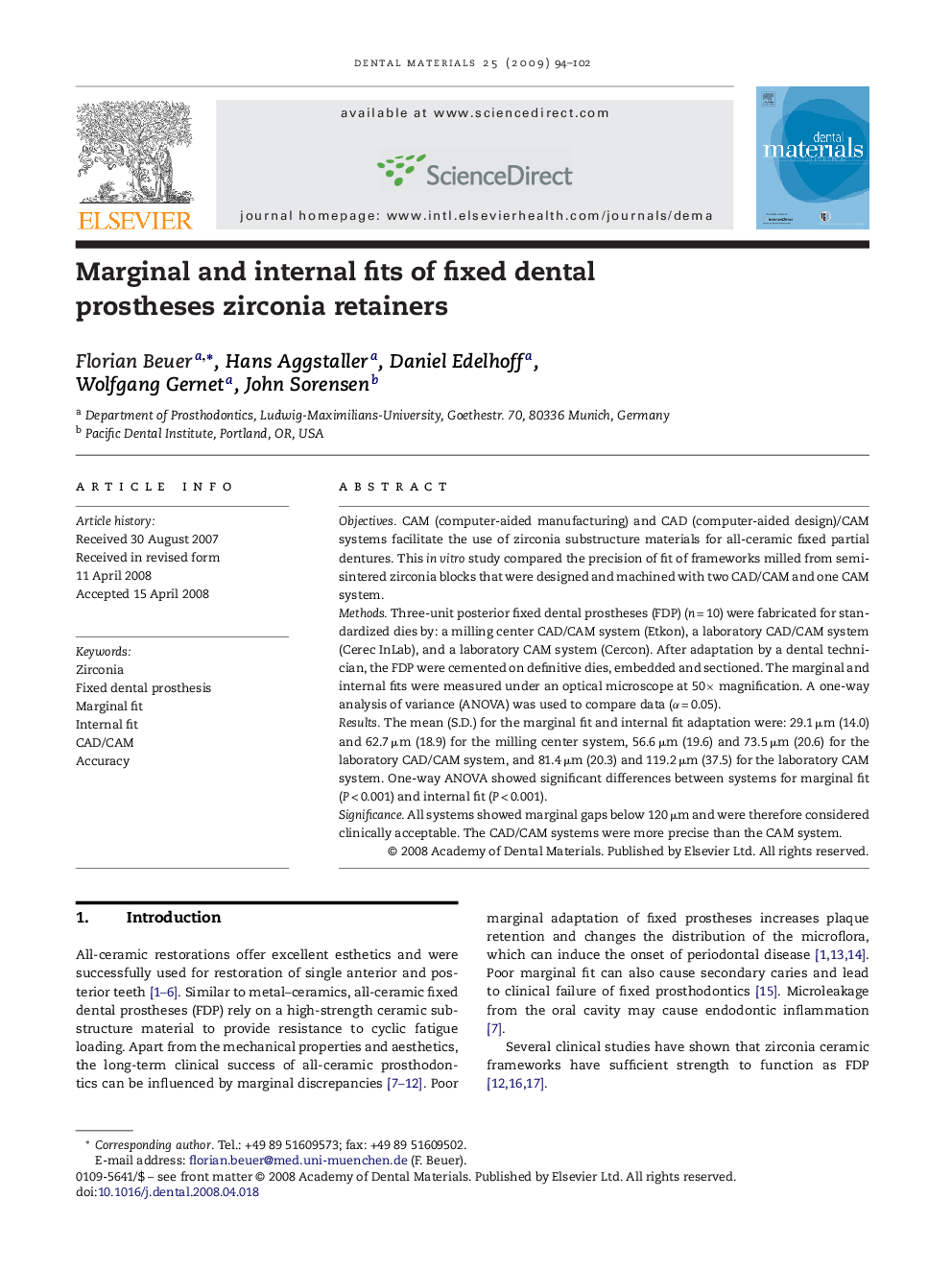| Article ID | Journal | Published Year | Pages | File Type |
|---|---|---|---|---|
| 1422522 | Dental Materials | 2009 | 9 Pages |
ObjectivesCAM (computer-aided manufacturing) and CAD (computer-aided design)/CAM systems facilitate the use of zirconia substructure materials for all-ceramic fixed partial dentures. This in vitro study compared the precision of fit of frameworks milled from semi-sintered zirconia blocks that were designed and machined with two CAD/CAM and one CAM system.MethodsThree-unit posterior fixed dental prostheses (FDP) (n = 10) were fabricated for standardized dies by: a milling center CAD/CAM system (Etkon), a laboratory CAD/CAM system (Cerec InLab), and a laboratory CAM system (Cercon). After adaptation by a dental technician, the FDP were cemented on definitive dies, embedded and sectioned. The marginal and internal fits were measured under an optical microscope at 50× magnification. A one-way analysis of variance (ANOVA) was used to compare data (α = 0.05).ResultsThe mean (S.D.) for the marginal fit and internal fit adaptation were: 29.1 μm (14.0) and 62.7 μm (18.9) for the milling center system, 56.6 μm (19.6) and 73.5 μm (20.6) for the laboratory CAD/CAM system, and 81.4 μm (20.3) and 119.2 μm (37.5) for the laboratory CAM system. One-way ANOVA showed significant differences between systems for marginal fit (P < 0.001) and internal fit (P < 0.001).SignificanceAll systems showed marginal gaps below 120 μm and were therefore considered clinically acceptable. The CAD/CAM systems were more precise than the CAM system.
